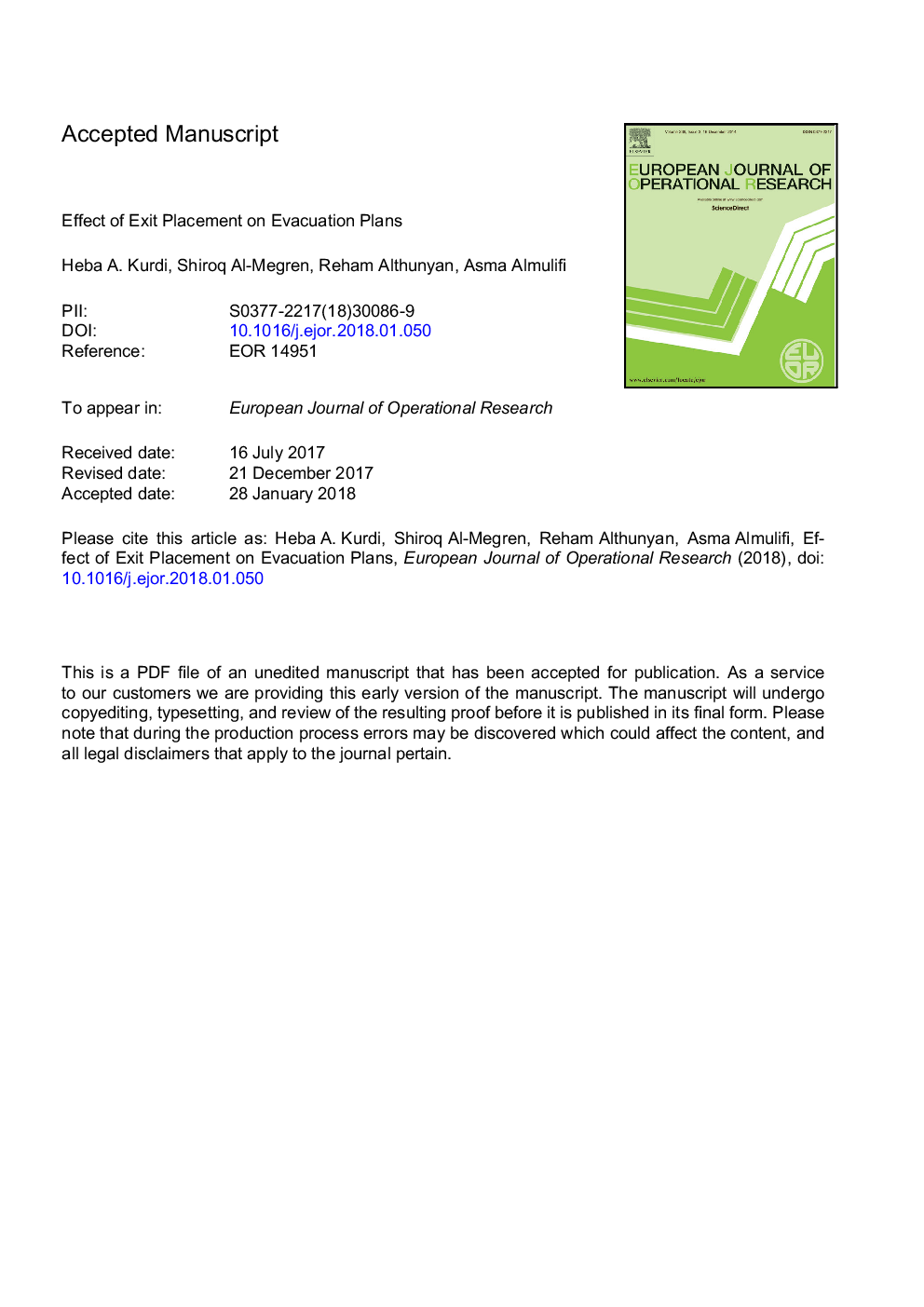| Article ID | Journal | Published Year | Pages | File Type |
|---|---|---|---|---|
| 6894740 | European Journal of Operational Research | 2018 | 33 Pages |
Abstract
Human behaviour while trying to escape a room via its main means of egress is an important issue in social science, complex systems research, and architectural planning. Disasters resulting from human crowding have increased in recent years. In such cases, it is important to consider several factors, including the smooth flow of pedestrians and the positions of obstacles and exits. This paper describes the effects of exit placement in environments congested with pedestrians. An evacuation system was designed and implemented with multiple exits in four different arrangements. The system utilised two artificial intelligence (AI) techniques-simulated annealing (SA) and depth-first search (DFS)-to examine the optimal balance between the placements of the various exits. Simulation and experimental results demonstrated that adjacently placed exits resulted in increased crowding at some exits over others when a nearest-exit path technique (DFS) was adopted as the evacuation strategy, resulting in longer evacuation times. Of the two examined evacuation techniques, SA proved superior, as it optimally balanced the pedestrian distribution over all available exits in all scenarios. In addition, the optimal-path technique (SA) did not suffer the ill-effects of adjacent exit placement. The simulation results confirm the importance of developing optimal evacuation plans, which could significantly outperform commonly employed nearest-exit evacuation strategies.
Related Topics
Physical Sciences and Engineering
Computer Science
Computer Science (General)
Authors
Heba A. Kurdi, Shiroq Al-Megren, Reham Althunyan, Asma Almulifi,
